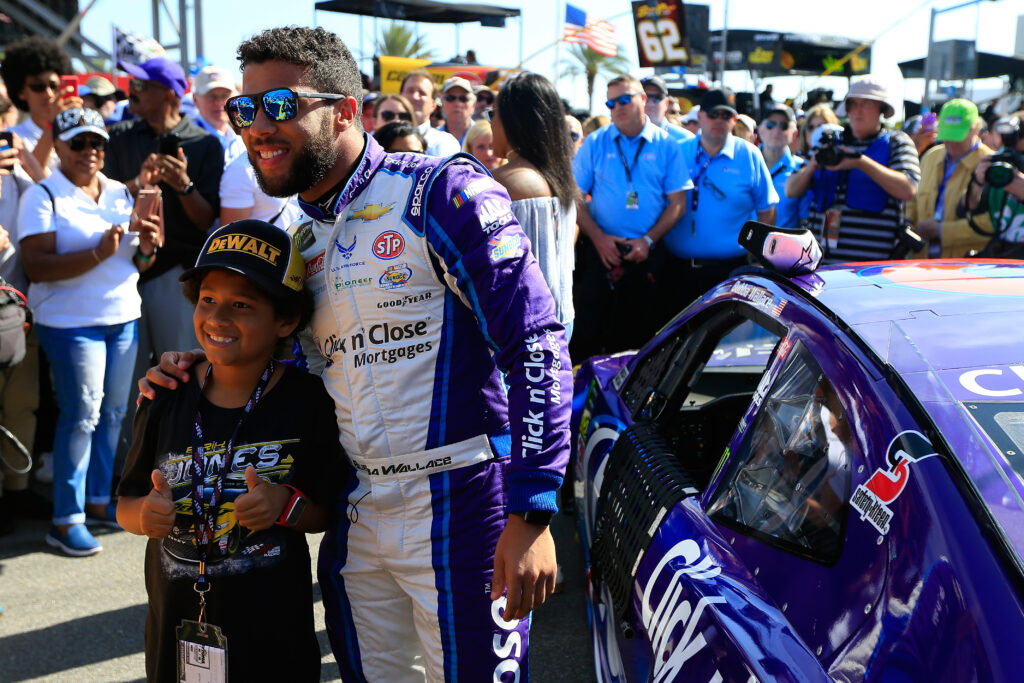NASCAR Is Growing Its Millennial Fan Base With An In-House Digital And Social Media Strategy

Turning into the second half of the 2018 season, NASCAR is relying on an in-house digital and social media strategy to grow its millennial fan base.
Asked about his vision for NASCAR, COO Steve Phelps said, “If there is one single goal, it is to grow the fan base and make it a younger and diverse fan base.”
Phelps iterated this vision could be accomplished without alienating NASCAR’s current fan base. “It is not that we aren’t interested in retaining older male fans; we count many of them as fans and want to continue doing so. However, our growth over the last three-years has come more from younger, female and Hispanic fans. Continuing down this path is a very exciting one,” Phelps told RULING SPORTS.
NASCAR’s eyes were opened to the dire need to focus on attracting younger fans five-years ago when data showed its fan base was aging a year at a time from an annual standpoint. To execute against this, NASCAR began redefining its digital presence.
“We brought our digital and social media rights in-house in 2013,” Phelps noted. “Because of this we now have our own voice and can talk to our fan base in our own way. We can also direct our own marketing through those channels.”
NASCAR’s digital and social strategy shifts have produced dividends. For starters, 30 new brands have invested in the sport since NASCAR resumed sales for its digital properties. These brands join the nearly half of FORTUNE 100 companies and more than 25-percent of FORTUNE 500 companies invested in the sport.
For Phelps, the ability to utilize digital and social media to generate and expand corporate partnerships is exciting. Also exciting is how the new strategy is expanding the reach of NASCAR’s drivers by using the sanctioning body’s social media channels.
With an influx of budding young stars already tasting success, this season has seen NASCAR engaging in new social media strategies to help build drivers’ fan bases and grow the reach of the sport. For instance, in tandem with NASCAR.com, Ryan Blaney launched the “Glass Case of Emotion” podcast, which focuses on “all things involved in the general pursuit of happiness.”
At the same time, NASCAR has focused heavily on promoting young drivers from its NASCAR Next and NASCAR Drive for Diversity programs. These drivers have experienced significant social growth on personal platforms since the beginning of 2018. For instance, former Drive for Diversity program participants, Bubba Wallace and Daniel Suarez have experienced 52-percent and 21-percent increases, respectively, in social media growth year-over-year.
“Our Drive for Diversity program came from Brian France’s vision to have a more diverse fan base,” Phelps noted. By developing diverse drivers, Phelps asserts NASCAR is growing in popularity amongst diverse fan bases. “Danny Suarez is from Mexico and has helped reach the Hispanic fan base, while Bubba Wallace has really resinated with the African-American fan base. Both of these men are very charismatic and have driven others like them to participate in the sport by either getting behind the wheel or engaging with NASCAR.”
The growing popularity of NASCAR’s young drivers comes as no surprise to Phelps.
“Guys like Daniel Suarez, Bubba Wallace and Ryan Blaney are all 25-years-old or younger, have their own swagger and are able to capture fan bases,” he said. “It’s not that a young person can’t identify with Kevin Harvick, Kyle Busch or Martin Truex Jr., but more so that people like to identify with people who are like themselves. The young drivers are capturing and taking over the fan bases of drivers who retired, like Jeff Gordon and Tony Stewart.”
For NASCAR, heavy emphasis in the digital space will remain central in its strategy to attract younger fans.
“The access the drivers in our sport have to our fan base is really helpful,” Phelps responded. “If you look at how our fan base is engaging with the sport and break engagement into TV, digital and social, you see that it’s almost generational. We’ve seen a shift in engagement from TV to digital to social. We want to make sure we are serving the fan base smartly where they are.”
Get the free weekly newsletter so you can win the game.
